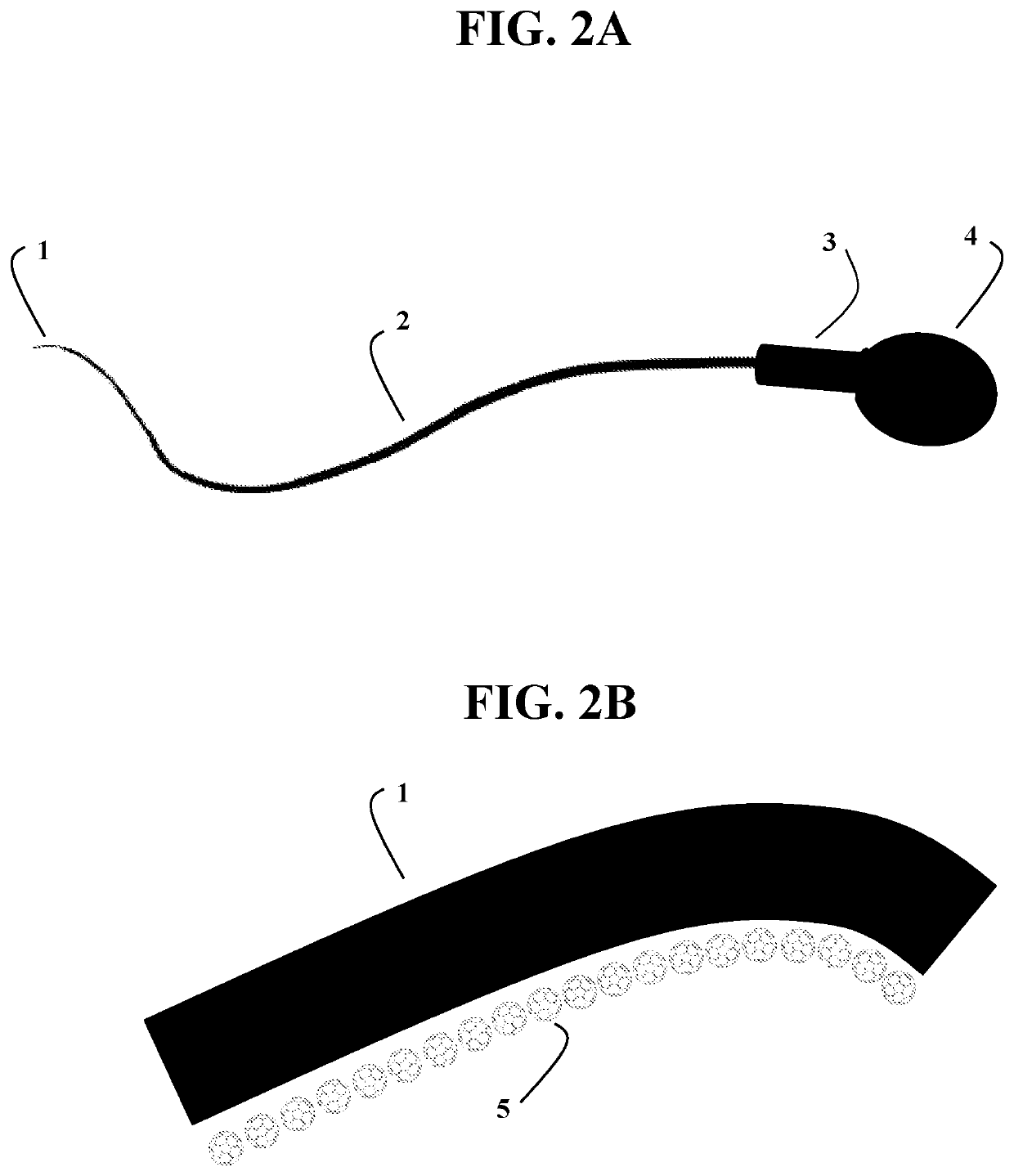Halogenated Fullerene Functionalized as a Biocidal and Chemotactic Spermicide to Vaginally Harbor and Neutralize Spermatozoa for Use as a Safe and Effective Contraceptive
a technology of spermicide and halogenated fullerene, which is applied in the direction of suppositories, capsule delivery, peptide/protein ingredients, etc., can solve the problems of inability to achieve absolute efficacy, so as to achieve the effect of preventing fertilization, stimulating agitation, and maximizing conta
- Summary
- Abstract
- Description
- Claims
- Application Information
AI Technical Summary
Benefits of technology
Problems solved by technology
Method used
Image
Examples
embodiment 1
Preferred Embodiment 1
[0046]a. A caustic halo fullerene (halogenated functionalized fullerenes) between 0.01% and 5.0%, preferably 0.1% and 1.5%, and in particular between 0.5% and 1.0% based on the total weight of the composition;[0047]b. A highly cationic peptide (protamine) between 0.0001% and 1.0%, preferably 0.001% and 0.1%, and in particular 0.01% and 0.05% based on the total weight of the composition;[0048]c. An aromatic aldehyde (bourgeonal) between 0.0001% and 2.0%, preferably 0.001% and 1.0%, and in particular 0.01% and 0.1% based on the total weight of the composition;
in a pH-neutral, buffered suspension that is inserted into the vagina prior to coitus.
embodiment 2
[0049]a. A caustic halo fullerene (halogenated functionalized fullerenes) between 0.01% and 5.0%, preferably 0.1% and 1.5%, and in particular between 0.5% and 1.0% based on the total weight of the composition;[0050]b. A highly cationic peptide (protamine) between 0.0001% and 1.0%, preferably 0.001% and 0.1%, and in particular 0.01% and 0.05% based on the total weight of the composition;[0051]c. An aromatic aldehyde (bourgeonal) between 0.0001% and 2.0%, preferably 0.001% and 1.0%, and in particular 0.01% and 0.1% based on the total weight of the composition;
in a pH-neutral buffered suspension contained within a dissolvable suppository that is inserted into the vagina prior to coitus.
embodiment 3
[0052]a. A caustic halo fullerene (halogenated functionalized fullerenes) between 0.01% and 5.0%, preferably 0.1% and 1.5%, and in particular between 0.5% and 1.0% based on the total weight of the composition;[0053]b. A highly cationic peptide (protamine) between 0.0001% and 1.0%, preferably 0.001% and 0.1%, and in particular 0.01% and 0.05% based on the total weight of the composition;[0054]c. An aromatic aldehyde (bourgeonal) between 0.0001% and 2.0%, preferably 0.001% and 1.0%, and in particular 0.01% and 0.1% based on the total weight of the composition;[0055]d. A highly cationic polymer (poly-L-lysine) between 0.0001% and 1.0%, preferably 0.001% and 0.1%, and in particular 0.01% and 0.05% based on the total weight of the composition;
in a pH-neutral, buffered suspension that is inserted into the vagina prior to coitus.
PUM
| Property | Measurement | Unit |
|---|---|---|
| Fraction | aaaaa | aaaaa |
| Fraction | aaaaa | aaaaa |
| Fraction | aaaaa | aaaaa |
Abstract
Description
Claims
Application Information
 Login to View More
Login to View More - R&D
- Intellectual Property
- Life Sciences
- Materials
- Tech Scout
- Unparalleled Data Quality
- Higher Quality Content
- 60% Fewer Hallucinations
Browse by: Latest US Patents, China's latest patents, Technical Efficacy Thesaurus, Application Domain, Technology Topic, Popular Technical Reports.
© 2025 PatSnap. All rights reserved.Legal|Privacy policy|Modern Slavery Act Transparency Statement|Sitemap|About US| Contact US: help@patsnap.com


